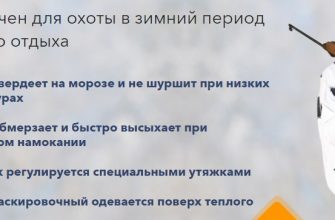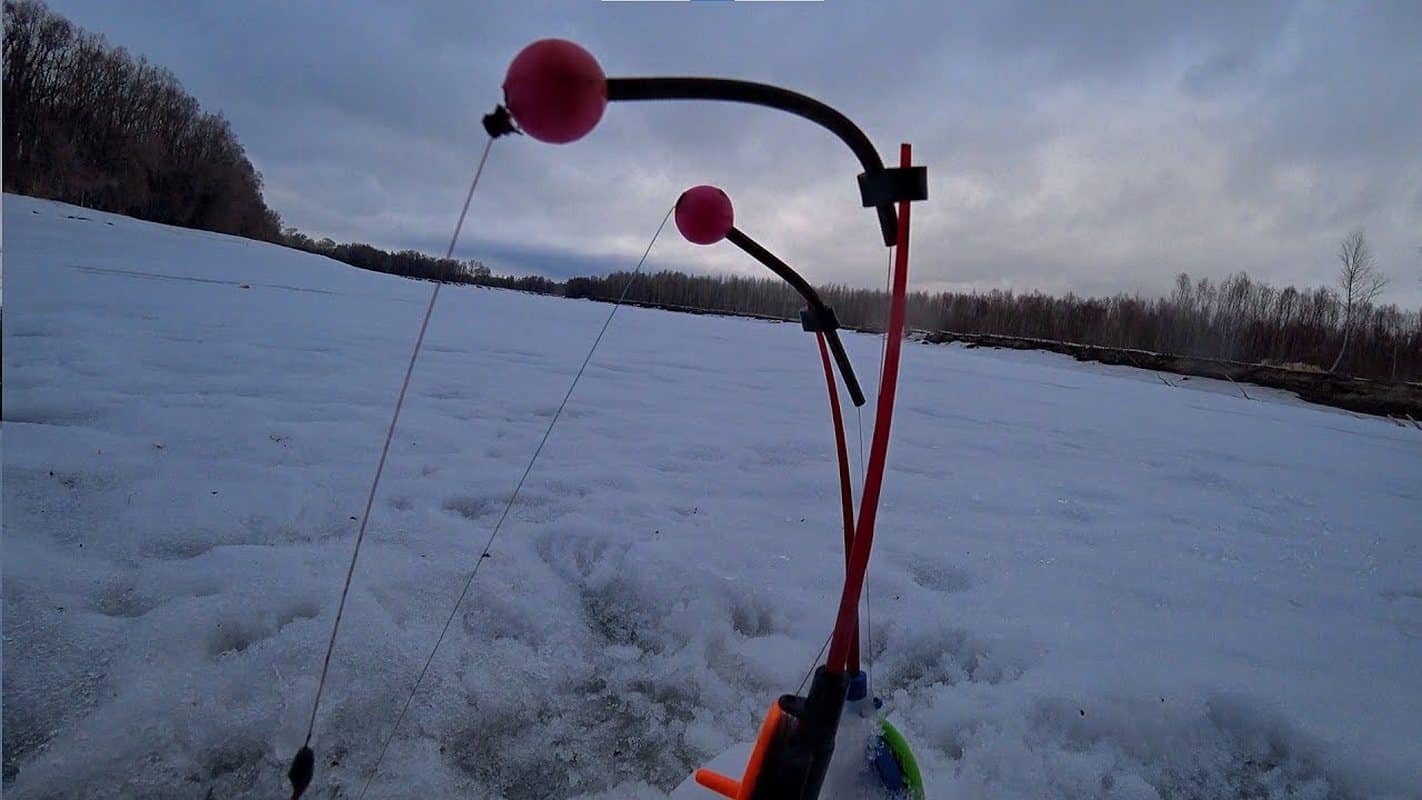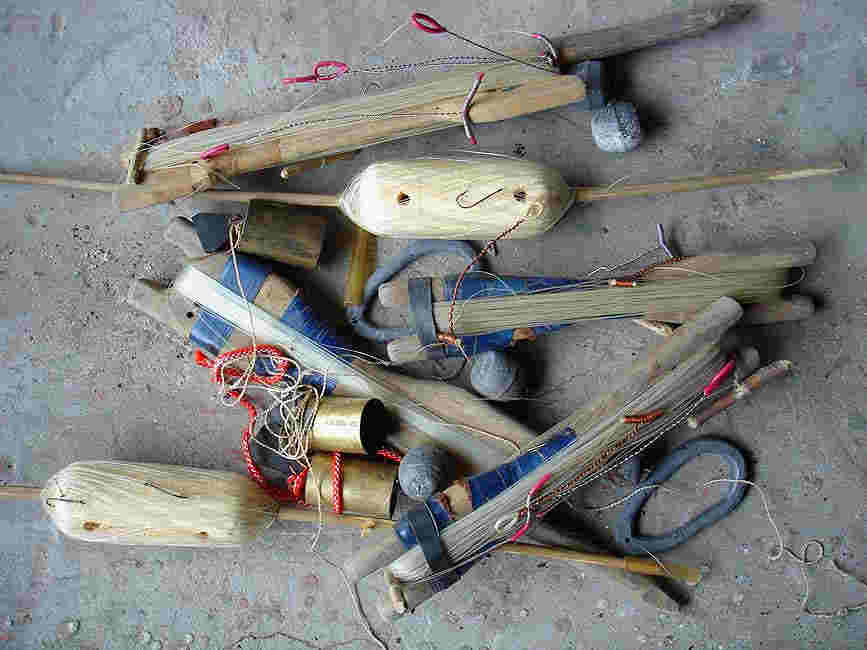Roach is considered one of the most promising fish for winter fishing. She is able to delight her cool (albeit not too active) during periods of calm, when even lively perches are in no hurry to be active. However, this does not mean that fishing roach in winter is easy – the success of fishing depends on knowing the habits of the fish at this time of year.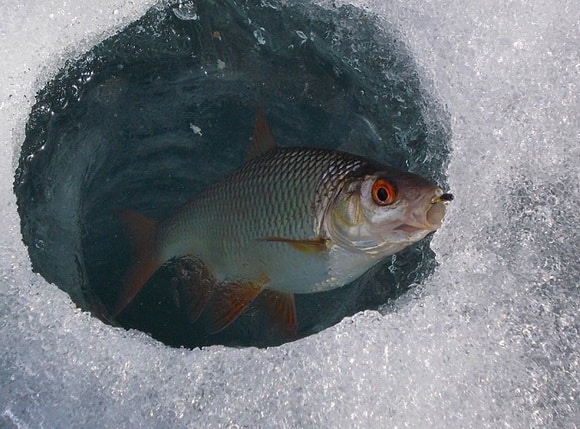
- Searching for roach in a winter reservoir
- Tackle for fishing roach in winter
- Fishing for roach in the current
- Jig with replanting
- Rewinder
- Float tackle
- Fishing for roach in stagnant waters
- Jig with hooking and rewinding
- Float tackle
- Lure
- Fishing for roach in the wilderness – is there a chance for a catch?
- Fishing for active roach
- Influence of weather on biting
- Tips and Secrets
- Поделиться ссылкой:
Searching for roach in a winter reservoir
Already at the beginning of winter, the activity of roach decreases markedly. You can count on the catch if you use thin gear. On lakes and reservoirs, it usually stands close to its wintering pits, however, in search of food, it can still freely move around the reservoir. On rivers in winter, roach prefers areas with little or no current. She often leaves the main channel and stands in places with a reverse current, where there is enough food for her. With the cooling and thickening of the ice layer, the fish leaves for areas more enriched with oxygen. On reservoirs with stagnant water and small rivers, you should look for it near springs and coastal thickets. On large rivers, roach usually stays at the mouth.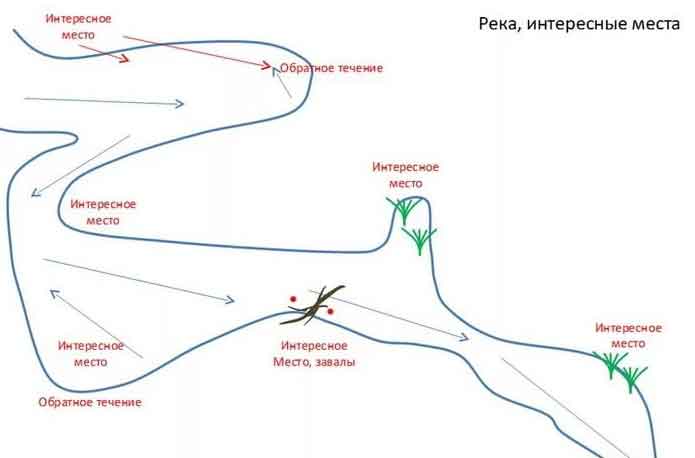
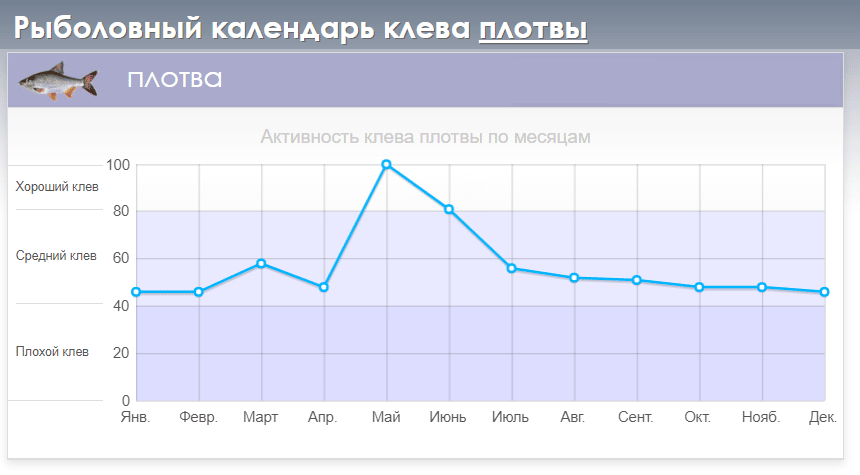
Attention! A roach bite in the wilderness usually falls on a day, from about 12 to 15 hours.
Tackle for fishing roach in winter
The choice of tackle depends on the type of reservoir (with or without current), as well as the personal preference of the angler.
Fishing for roach in the current
Possible both in open water and in closed water. In the second case, you should be more careful: the thickness of safe ice on water bodies with the current is greater than without it. There are several main ways of fishing.
Jig with replanting
Jigs with an extended hook shank allow you to add additional bait to the hook. This fishing method has several advantages:
- live replantings behave as naturally as possible in water;
- a smell spreads from live baits, which additionally attracts fish;
- ease of use;
- high performance;
- the possibility of using not only live baits, but also artificial baits, for example, beads or colored plumage.
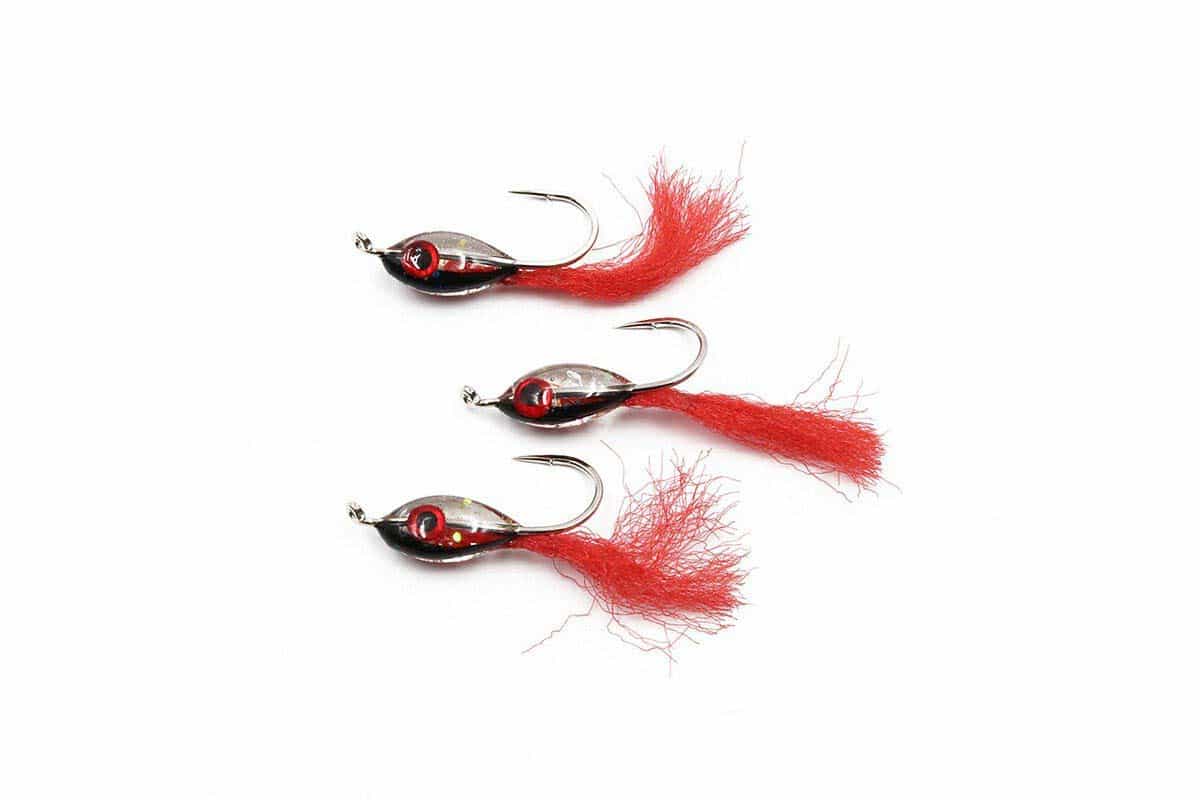 However, when fishing with a boost, you should immediately prepare for idle bites. Also, in bad weather and severe frost, it is not very comfortable to plant the bait. The best jigs for catching with a drop are considered to be a drop and a pellet. It is desirable that their color matches the color of the bait.
However, when fishing with a boost, you should immediately prepare for idle bites. Also, in bad weather and severe frost, it is not very comfortable to plant the bait. The best jigs for catching with a drop are considered to be a drop and a pellet. It is desirable that their color matches the color of the bait.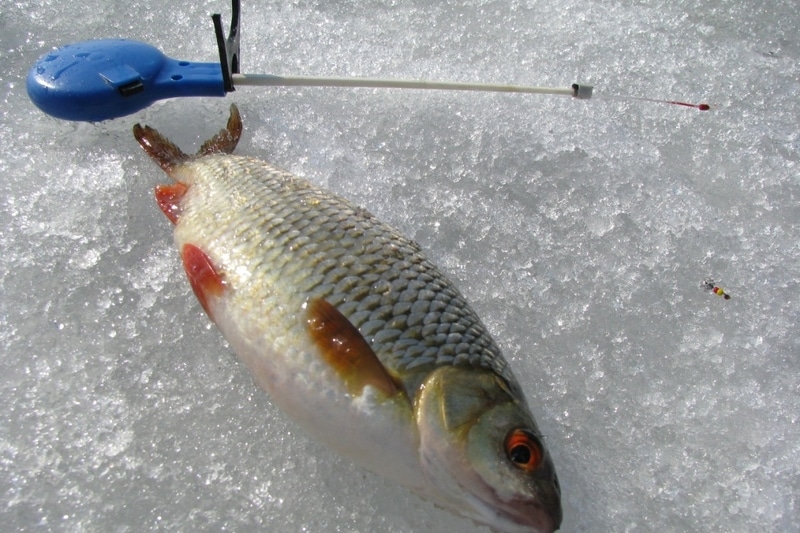
Rewinder
The windless can please with a good catch in winter. To some extent, such fishing is similar to spinning – an artificial bait is used without additional bait, which attracts fish with its game, and the angler has to run around the reservoir in search of a flock. A recoil rod should be as light as possible; even reelless options are often used. The line is monofilament, 0.10-0.12 mm thick, but you can also use fluorocarbon. As for the rewinder itself, nothing can be said in advance. There is no universal catch bait, it all depends on the time of day, weather conditions and fish preferences in the reservoir. Therefore, it is advisable to have several lures of different sizes and colors with you.
Important! The beads are additionally decorated with various accessories – cambric, beads, etc.
The
Float tackle
The float is a great option for fishing on the current. The most popular rods for collecting such tackle are “filly”. Firstly, they are lightweight, secondly, they have a simple design, and thirdly, they are reliable.
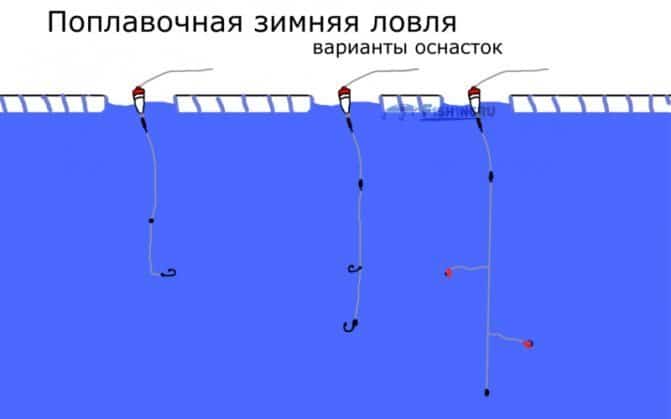
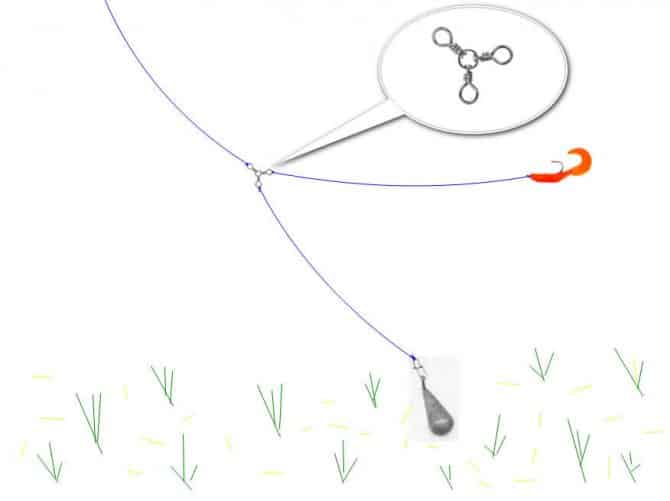 Option for a winter diverter line [/ caption] The classic bait for fishing roach in winter:
Option for a winter diverter line [/ caption] The classic bait for fishing roach in winter:
bloodworms . They plant it one at a time. Maggot and burdock moth larva also work well. In the absence of bites, you can try your luck on the dough or semolina, which is kneaded with bovine blood. Fishing tactics are to find fish. First of all, whirlpools, pits and other depressions on the bottom are fished. In December, the raft often bites at a depth of 4-6 m, and in January and February it may even appear in shallow water. After finding the flock, the point is lured.
Fishing for roach in stagnant waters
There are no differences in tackle from fishing on the current, but there are several nuances that should be mentioned.
Jig with hooking and rewinding
In this case, there is also no point in “playing” with a live bait jig, but you will have to use artificial baits. A steady, slow sweep from one end of the hole to the other is usually sufficient. You can also sometimes lower or raise the bait with different amplitudes, or you can combine the above methods.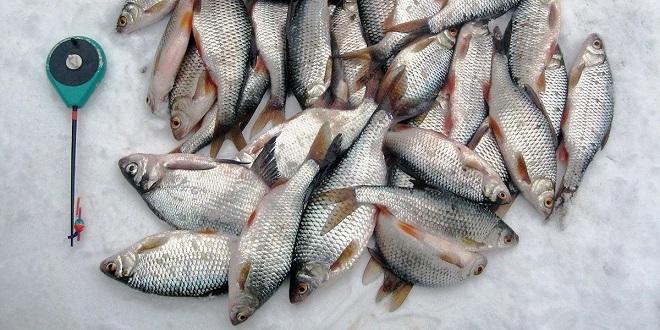
Float tackle
The use of a diverter float when fishing in bodies of stagnant water is useless. Usually the float is loaded with several pellets of different sizes, located at a distance of 7-10 cm from each other. The largest one is closer to the float, and further in decreasing size to the very hook. In this case, it will also be useful to “play” with the bait from time to time. Float equipment for standing reservoirs [/ caption]
Float equipment for standing reservoirs [/ caption]
Lure
Groundbait is an indispensable attribute when fishing for roach in winter. Directly about the recipes a little later, first you need to recall the rules for feed mixtures at this time of year:
- the groundbait should not be very thick . It should be crumbly and disintegrate, creating a cloud of turbidity.
- in winter there is a risk of overfeeding the fish , so it is better to serve the bait in small portions.
- with flavors in cold water, you need to be as careful as possible . In cold water, odors spread much better and excess additives are more likely to flush fish away.
https://tytkleva.net/zimnyaya-rybalka/prikormka-na-plotvu.htm The classic recipe for bait for catching roach in winter looks like this: ground rice is mixed with bread crumbs, rolled oats and milk powder in a 1: 1 ratio, and then into the mixture sunflower seeds or ground cornflakes are added. The latter components perform two roles at once: they spread the aroma that attracts fish and make the bait loose, due to which it breaks down into particles in the water and forms a cloud of turbidity. Further, lemon zest, coconut flakes can be added to the mixture. It is also advisable to add a little bloodworm or maggot and clay from the reservoir, however, these components are combined depending on the specific fishing conditions and, in principle, are optional.
Fishing for roach in the wilderness – is there a chance for a catch?
Fishing roach in the wilderness cannot be called particularly successful, but the opposite cannot be said. Sharp bursts of fish activity can be replaced by a complete lack of bite and vice versa. There are no universal advice, it all depends on the conditions on the reservoir and the weather. But there are recommendations that will increase the chances of catching roach during this difficult time of the year.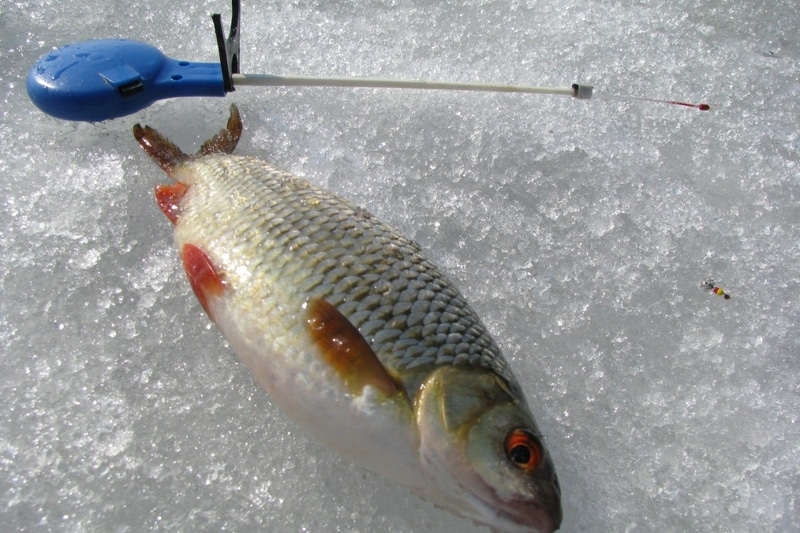
Important! Another important point is vertical migration, which depends on many factors, including water temperature and time of day. The fish migrate after the food supply, therefore, even in the wilderness, sometimes you can catch roach in shallow water.
It is more difficult in reservoirs with stagnant water. Here the roach can safely stand at a depth of no more than 3 meters. But more often it is still located at heaps, edges and any other irregularities in the relief, as well as among the remaining vegetation. A universal place for fishing both on reservoirs with stagnant water and on rivers will be the areas of confluence of streams and tributaries. They carry oxygen-rich water into the reservoir. Quite often in such places there are small depressions of the relief (no more than 10 cm), where roach often stands. How to catch large roach in winter on a jig from the ice – video from the shore of the reservoir: https://youtu.be/CszJ4RIBUA8
Fishing for active roach
Fishing for active roach will not be difficult. The best way is to drill several holes at some distance from each other, then feed them in turn. You can limit yourself to one hole, but there are more chances that the flock will not get lost on the way. The biting of even active fish cannot be called good, it can suddenly stop, but you should not immediately leave the place or throw in the bait again – it is better to wait 30-40 minutes, and if the biting does not resume, go further in search of fish.
Influence of weather on biting
Winter is the season when the weather has a strong influence on roach biting. At this time of the year, good fish activity is observed when the weather is constant for several days, without sudden changes in temperature or atmospheric pressure, and this applies not only to roach, but also to other inhabitants of water bodies. Atmospheric pressure can affect the biting of fish for the worse with sharp jumps – both up and down. But if the pressure decreases gradually or is constantly kept at medium or high values, the opposite happens. It has also been observed that roach reluctantly respond to baits if the atmospheric pressure is constantly kept low.
Tips and Secrets
- Despite the predilection of roach for animal bait in winter, it readily responds to ordinary dough. However, it should be remembered that such a bait should be changed more often, even in the absence of bites, as it quickly becomes soaked and loses its properties.
- During the dry winter season, it is advisable to use the smallest baits for fishing – at this time the fish will not waste energy hunting for large prey.
- You can count on catching trophy roach in winter, but at this time of the year its behavior is similar to bream , so you need to catch it at night.

